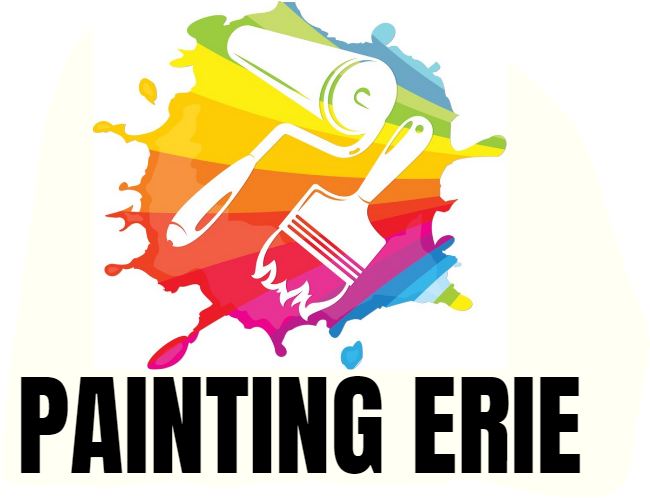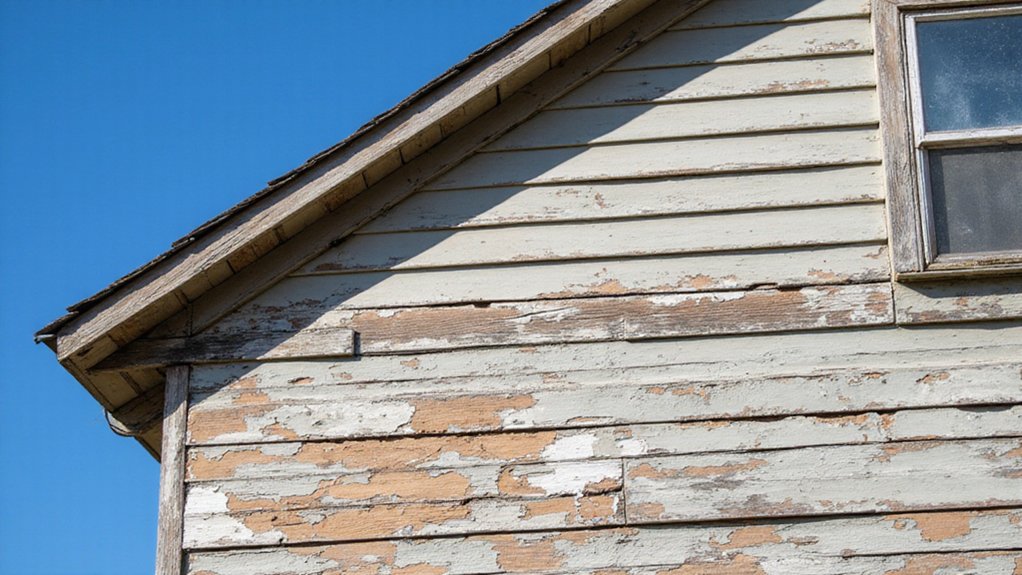You’re about to tackle exterior painting. It’s vital to know the top issues that can arise, such as peeling and cracking. What causes these problems and how can you prevent them?
Peeling Paint: Causes and Prevention
Several factors contribute to peeling paint, and you’ll often notice it first on exterior surfaces exposed to the elements. High humidity levels can cause the paint to lift off the surface, leading to peeling.
You can prevent this by guaranteeing the surface is clean and dry before painting. A poorly applied primer is another common cause of peeling paint. You should apply a primer specifically designed for exterior use to create a strong bond between the paint and the surface. Additionally, choosing high-quality paints designed for exterior conditions can significantly reduce the risk of peeling over time.
Cracking and Flaking: How to Avoid
You’ve taken steps to prevent peeling paint, but another common issue can affect your exterior paint job: cracking and flaking. This can be caused by uneven application, which leads to weak spots in the paint. To avoid this, you should guarantee a smooth, even coat.
- Check for chalking surfaces before painting
- Use a high-quality primer to create a strong bond
- Apply paint in the recommended environmental conditions
- Avoid using low-quality paint that’s prone to cracking.
- Repainting is essential when you notice peeling and cracking as it indicates the existing layer has failed.
Fading and Discoloration: Maintaining Color Integrity
As you work to maintain your exterior paint job, fading and discoloration can occur if the paint isn’t properly formulated to withstand environmental stressors. You’ll notice that sun exposure and temperature changes can cause the paint to break down, leading to a loss of color integrity.
To prevent this, you should choose a paint that’s specifically designed to resist fading and discoloration. Look for paints with high-quality pigments and UV-resistant additives. You can also take steps to reduce sun exposure, such as installing awnings or using shading devices.
Mildew and Mold: Prevention and Removal
Because exterior paint is constantly exposed to moisture and humidity, it’s a breeding ground for mildew and mold. You can prevent this by focusing on moisture control and surface preparation.
- Ensure good airflow around your home
- Fix any water leaks or damage
- Clean the surface before painting
- Use a mildew-resistant paint to protect your exterior. By taking these steps, you’ll be able to keep mildew and mold at bay, guaranteeing your exterior paint job looks great and lasts longer.
Proper surface preparation is key to preventing mildew and mold, so don’t bypass this critical step when painting your home’s exterior.
Uneven Finish: Achieving a Smooth Exterior Paint Job
Proper surface preparation, which helps prevent mildew and mold, also plays a significant role in achieving a smooth exterior paint job. You’ll want to guarantee all surfaces are clean, dry, and free of debris before painting. This step is indispensable in creating a strong bond between the paint and the surface.
To achieve a smooth finish, you’ll need to use consistent application techniques, such as maintaining a wet edge and applying paint in sections. This will help prevent streaks and unevenness. By following these guidelines, you can achieve a professional-looking paint job that will last for years to come.
Frequently Asked Questions
What Paint Is Best for Exterior Use?
You’re looking for exterior paint, consider low sheen finishes with durable coatings, they’ll provide a strong, long-lasting finish that’ll make you feel proud of your home’s exterior.
Can I Paint in Direct Sunlight?
You’re painting, but can you paint in direct sunlight? Consider ideal sunlight timing, as high painting surface temperature can affect results, so you’ll want to time it just right.
How Often Should I Repaint Exterior?
You’re planning your paint maintenance schedule, considering proper surface preparation to determine how often you should repaint exterior surfaces to maintain their quality and appearance over time, right?
Is Primer Necessary for Exterior Paint?
You’re considering primer for exterior paint, focusing on paint quality considerations and proper surface preparation to guarantee a durable finish that you’ll be proud to call your own, always.
Can I Paint Over Existing Paint?
You’re considering painting over existing paint, but first, assess the paint condition and complete necessary surface preparation to guarantee a strong bond and enduring finish, don’t you?

